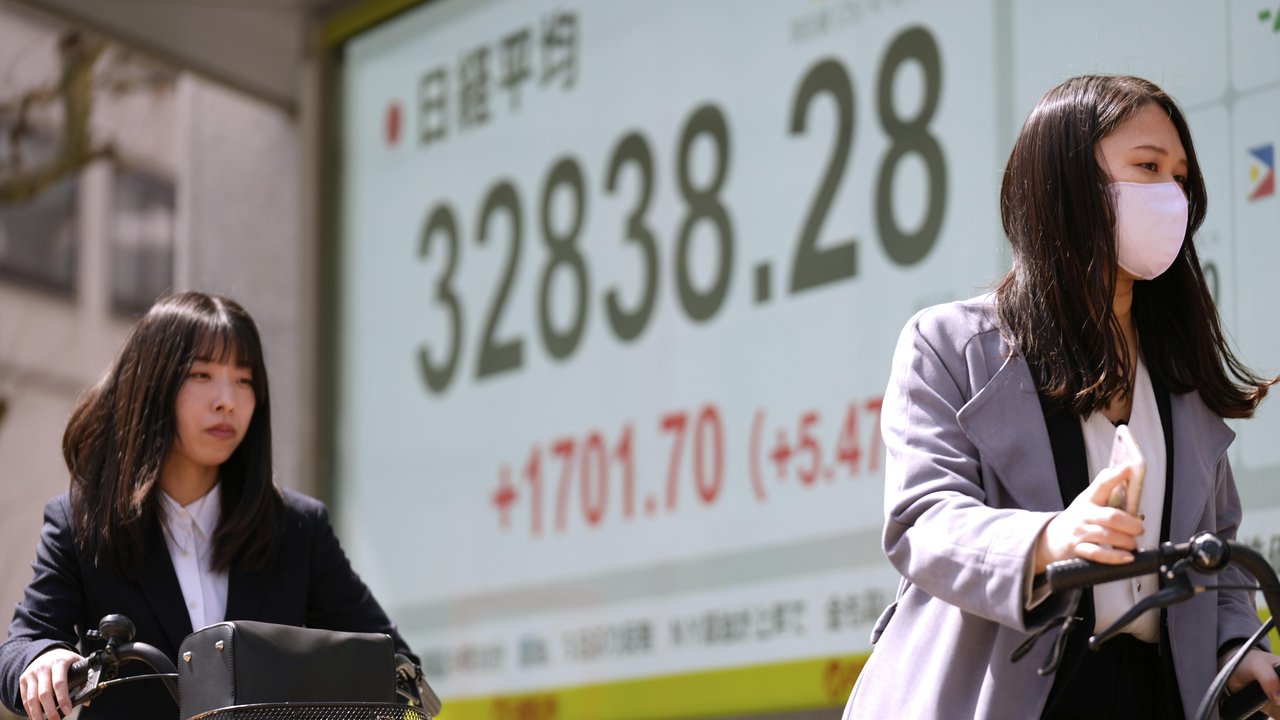Global equity markets held at their best levels in over three weeks on Monday, reflecting some hopes that the worst of tariff pain is over, but confusion over US trade policy lingered and trapped the dollar.
European shares firmed and Asia markets made fractional gains at the start of an earnings-heavy week that also sees the release of key US jobs data and is book-ended with elections in Canada and Australia. US President Donald Trump looms large in both.
While Trump has claimed progress is being made on trade with China, and many other countries, evidence is lacking. Treasury Secretary Scott Bessent failed on Sunday to back Trump’s assertion that tariff talks with China were underway.
“The fact that we are going through a de-escalation in trade tensions doesn’t mean that we won’t still get a growth slowdown,” said Mike Kelly, global head of multi-asset at PineBridge Investments.
The often confusing rollout of tariffs is expected to inflict lasting damage on the global economy as uncertainty weighs on business and consumer confidence, slowing investment and spending.
“Uncertainty is not just about a one-off event but its duration,” Kelly added.
MSCI’s world stock index hovered near its highest levels since April 3, the day after Trump unveiled his reciprocal tariffs that roiled markets.
Japan’s Nikkei rose 0.4 per cent, while Chinese blue chips were little changed as officials stuck with their economic growth projections, despite the drag from tariffs.
Hong Kong’s Hang Seng was nearly unchanged at 21,971.96, while the Shanghai Composite Index fell 0.2 per cent to 3,288.41.
European shares rallied 0.6 per cent, building on two straight weeks of gains, while S&P 500 and Nasdaq stock futures pared earlier falls. The S&P has bounced almost 12 per cent from an April 8 trough, but remains 10 per cent below its peak.
Corporate earnings have been generally supportive, with gains of more than nine per cent, though BofA noted 64 per cent of companies had beaten earnings per share (EPS) guidance, compared to 71 per cent the previous quarter.
“Despite having played second fiddle to geopolitics of late, the US earnings season is moving along well and is on track for its seventh consecutive quarter of positive earnings growth,” said Rory McPherson, chief investment officer at Wren Sterling.
About 180 S&P 500 companies representing over 40 per cent of the index’s market value report this week, including mega-caps Apple , Microsoft, Amazon and Meta Platforms .
In currency markets, the dollar struggled to make headway as trade wariness lingered.
It was down about 0.2 per cent at 143.47 yen, little changed against the euro at 1.1356, while sterling rallied 0.25 per cent to $US1.3344 .
The greenback is also down more than four per cent on both the euro and the yen in April, though bounced at the end of last week on a conciliatory shift in the tone of US-China relations.
A solid US jobs report on Friday could aid the dollar’s bounce if it dampens Federal Reserve rate cut expectations, analysts said.
Money markets imply a roughly 65 per cent chance of a rate cut in June and 85 basis points of easing by year-end.
“With the market already pricing in around 125 bps of easing into next year, taking the Fed Funds policy rate to neutral near 3.25 per cent, the next big story for the dollar will probably be whether US data is weak enough to merit Fed policy being priced below neutral,” ING’s global head of markets, Chris Turner, said.
Canada’s dollar was a touch softer at 1.3869 per US dollar. Canadians go to the polls on Monday after an election campaign in which Trump’s tariffs and musings about annexing Canada became the central issue.
Treasuries have also steadied in the wake of Trump’s assurance he would not try to fire Fed Chair Jerome Powell, leaving 10-year yields at around 4.25 per cent compared to the April top of 4.592 per cent.
Former Federal Reserve Governor Kevin Warsh, with whom Trump is reported to have discussed firing Powell and installing him in his place, on Friday unleashed a barrage of criticism of the Fed and argued for fundamental changes to how it operates.
A tentative improvement in risk sentiment saw gold slip 0.9 per cent to $US3,290 an ounce, from its all-time peak of $US3,500.
Oil prices were stable as investors weighed up uncertainty over trade talks between the US and China, clouding the outlook for global growth and fuel demand, as well as the prospect of OPEC+ raising supply.
Brent crude and US West Texas Intermediate crude futures were both down about 0.5 per cent each, with Brent crude trading at around $US66.50 a barrel.
with AP
Australian Associated Press is the beating heart of Australian news. AAP is Australia’s only independent national newswire and has been delivering accurate, reliable and fast news content to the media industry, government and corporate sector for 85 years. We keep Australia informed.





